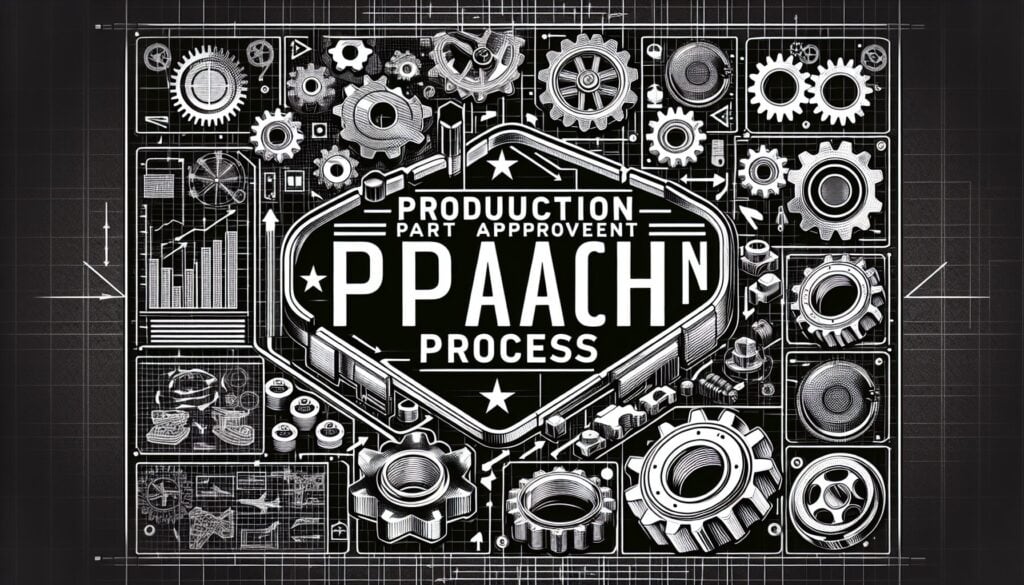汽车和航空航天业(及其他行业)的标准化流程,确保供应商能够始终如一地生产出符合客户工程设计记录和规格要求的零件。
- 方法: 人体工程学
PPAP(生产部件批准程序)

- 先期产品质量规划(APQP), 加工能力, 流程改进, 生产件批准流程 (PPAP), 质量保证, 质量控制, 质量管理, 质量管理体系(QMS), 供应商权力
PPAP(生产部件批准程序)
- 先期产品质量规划(APQP), 加工能力, 流程改进, 生产件批准流程 (PPAP), 质量保证, 质量控制, 质量管理, 质量管理体系(QMS), 供应商权力
目标
如何使用
- 供应商编制一套文件和样品(PPAP 文件包),以证明其生产工艺能够始终如一地生产出符合所有要求的零件。在开始全面生产之前,该文件包将提交给客户审批。
优点
- 确保客户与供应商之间清晰地沟通要求;验证供应商对要求的理解和满足要求的能力;降低生产中出现不合格部件的风险;提供客观证据,证明供应商有能力满足要求。 过程能力.
缺点
- 对供应商来说,可能需要大量文件,耗费大量时间;要求可能很复杂,而且因客户而异;产品或流程的任何变更往往需要重新提交,增加了工作量。
类别
- 制造业, 质量
最适合:
- 在批量生产前,确保供应商的生产流程能够始终如一地生产出符合所有客户规格的零件。
PPAP is widely utilized in automotive, aerospace, and manufacturing industries, where the precise quality of parts is paramount. This methodology is particularly relevant during the transition from prototype to mass production, ensuring that any parts submitted can meet the design specifications and regulatory standards expected by the customer. Participants typically include suppliers, quality assurance teams, and engineering personnel from both the supplier and customer sides, creating a collaborative environment for clarity and mutual understanding. Key components of the PPAP package may include design records, engineering change documents, process flow diagrams, control plans, measurement systems analysis, and initial sample inspection reports. These documents serve to verify that all production processes are capable of producing conforming product consistently, offering a systematic approach to quality management. Engaging in this process can preemptively address potential discrepancies, thus minimizing the likelihood of costly production delays or recalls caused by non-conforming products. The adoption of PPAP enhances transparency and trust, as both suppliers and customers are committed to fulfilling agreed-upon quality benchmarks, fostering a strong partnership built on accountability and shared objectives in delivering quality outcomes.
该方法的关键步骤
- Review customer specifications and requirements.
- Conduct a process flow diagram analysis.
- Complete the Process Failure Mode and Effects Analysis (PFMEA).
- Establish control plans for the manufacturing process.
- Perform measurement system analysis (MSA).
- Validate product design through dimensional and functional testing.
- Submit the PPAP package including samples and documentation.
- Address any customer feedback or requests for additional information.
- Receive customer approval for the PPAP submission.
- Commence full production upon approval confirmation.
专业提示
- Implement real-time monitoring and data collection during initial production runs to identify variations early in the process.
- Use advanced statistical tools such as Control Plans and Process Flow Diagrams to document and analyze production processes extensively.
- Establish a multi-disciplinary team involving design, quality, and manufacturing engineers during PPAP preparation to ensure thoroughness in each aspect of part production.
历史背景
1949
1950
1950
1960
1960
1960
1960
1940
1950
1950
1958
1960
1960
1960
1960
(如果日期不详或不相关,例如 "流体力学",则对其显著出现的时间作了四舍五入的估计)。















相关文章
肌肉骨骼不适调查表
多变量测试(MVT)
多元回归分析
动作捕捉系统
MoSCoW 方法
情绪中值测试